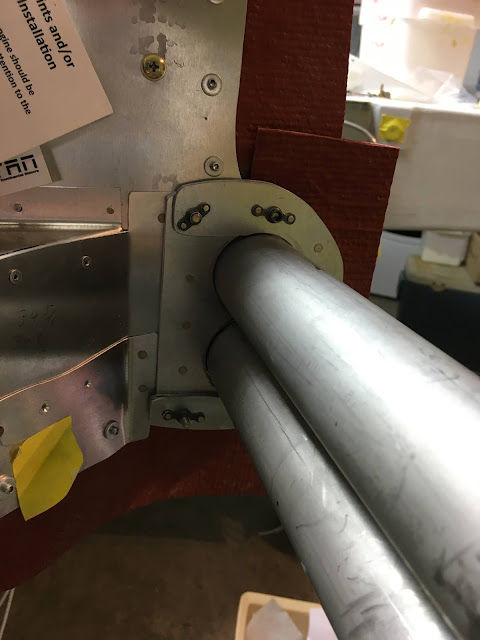Glass panel - (Dynon Skyview installed)
Teflon aileron and rudder hinge pin tubes. (completed)
Electric belly brake (completed)
Site gauges (Vance Atkinson) (completed)
Fuel probes (Nick Ugolini) (completed)
CG strakes (completed)
CG HD IO-360 Motor mount (Cozy Girrrls) (completed)
CF boat tail cowl (Freeflight Composites) (completed)
Leg fairings (Eureka CNC) (completed)
Electronic Ignition -SDS EM5(installed)
Electronic Fuel Injection - SDS EM5 (complete)
Belleville Washers Solon Mfg. for propeller (installed)
Retractable step (pending)
Fuselage access door elimination/modified canopy latch
Auxiliary/enhanced cabin heat (Plans heat in use during Phase I seems adequate at this time.)
Non-plans taxi/landing light (undecided on location/type)
Non-plans Pitot tube (currently in the nose)
Vortex Generators (slower landing speeds-purchased Stolspeed Vortex Generators from ACS-installed briefly during Phase I but removed them.)
Fuel control valve moved forward. (completed)
Removable canard cover (easier removal of fuselage cover for instrument access-completed).
Electric Pitch and roll trim (completed)
Widened NACA inlet throat (completed)
Brake heat shield temp sensors/Dynon panel widgets added (completed)
NACA Diffuser - (ref CSA Newsletter Set/Jul-03.pdf page=29) (completed)
No lower cowl baffling/ramps. (update- added plans type baffle in bottom of cowl and have modified it several times to balance CHT's.)
Aerocomposites "modified Defiant" wheel pants (installed-primed)
Actuator controlled cabin heat (eliminates cable positioned between the pilot and copilot. The control switch is easy to reach) - complete
Buss or Master "Switch On Warning" - sounds warning when switch or switches are left on and engine is not running. Helps avoid leaving the power on inadvertently. - complete
VOR & ILS antennas mounted above canard/under canard cover. Original builder didn't install the copper tape antennas. I built "double bazooka" antennas for the ADS-B in, VOR and glide slope which seem to work sufficiently. - complete
Landing/Taxi lights. Inclined to install them on the outboard leading edges like Nick U has.

































































































